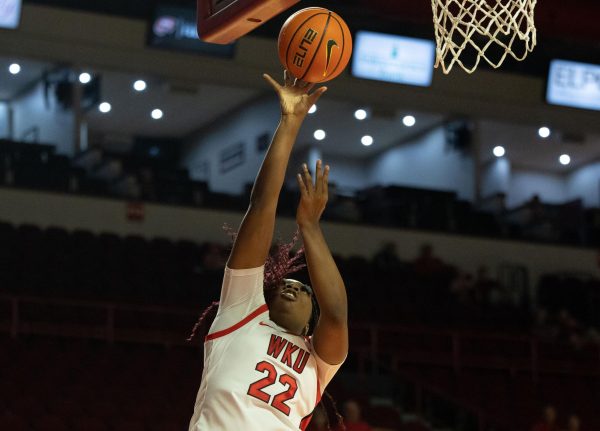The good, the bad, the ugly of ‘500 calories or less’
September 15, 2016
Let’s face it, eating healthy in college is difficult. The “freshman 15” is weighing on the minds of young Hilltoppers, while the empty calories filling the Hilligans’ cups seem to be adding up.
In response to some students’ concerns, this semester the WKU Restaurant Group along with WKU Dietitian Brandi Breden compiled a list of meals with 500 calories or less on campus.
Note: this doesn’t solve the solution of binge drinking at Hilligans, or whichever establishment our responsible 21-year-old Toppers may choose.
While the “Healthier Eating with a Meal Plan” pamphlet does offer some healthier choices, a general nutrition idea is overlooked: not all calories are good calories.
Just because a food lacks a lower amount of calories, doesn’t mean it has the nutrients needed for a sustainable diet. If you took Mary Poppins’ advice to the extreme and only ate spoonfuls of sugar every day, but stayed within a 500 calorie limit, you would eventually die.
This is why its important to make sure, even while consuming a low-calorie diet, you are filling your body with good calories.
“Focus on eating lean protein, healthy fats, and unprocessed, unrefined carbohydrates such as vegetables, beans, and fruit. And when it comes to whole grains, the less processed the better,” according to Women’s Health Magazine.
So let’s address the good, the bad and the ugly of the “Healthier Eating with a Meal Plan” pamphlet.
The Good
One of the recurring meal options at many WKU Restaurant Group locations is the humus and veggies choice. Honestly, for a lunch or dinner option, this might not be the most filling choice. But for a midday snack, it should keep the stomach happy until dinner time.
Recently, The Huffington Post published a piece titled “10 Reasons Why We Should All Be Eating Humus.” One of the reasons is humus is rich in proteins and can help curb excessive snacking. It might help you stay away from a midday trip to Chick-fil-A.
Another “good” choice listed on the pamphlet are many options at Burrito Bowl located in Downing Student Union.
Note: other than Burrito Bowl, DSU is a wasteland of empty calories.
I’m not saying the spoonfuls of rice that accompany a layer of sauce in the burrito bowls are necessarily a good thing, but if you limit the rice, up the veggies and cut the sauce you should be leaving with a fair amount of nutrients.
The Bad
The 6” egg and cheese sub at Subway isn’t necessarily bad for you; just bad. When I watch the employees microwave a slab of egg that’s been sitting in refrigeration, I cringe a little inside.
But in the Health.com article “What to Order for Breakfast at Subway According to a Dietitian,” the egg and cheese has a comparably low sodium content to other Subway breakfast options.
When someone generally thinks of a cheeseburger, I can imagine his or her first thought is not “healthy.” However, the Grille Works “Jr. Cheeseburger on whole grain, no cheese, with whole fruit” is listed on the pamphlet.
While I do commend the switch to whole grain, the lack of cheese and the fruit option, I think a better choice can be made. Just because bread is “whole grain,” doesn’t necessarily mean it is healthy. But this isn’t the worst thing you could eat.
The Ugly
Processed white bread, sugar and more sugar are three ways to describe peanut butter and jelly sandwiches. Don’t get me wrong, I love a good PB and J, but it is not my idea of a “good” or fulfilling calorie option.
And while the sandwich might be under 500 calories, avoid it if you want to have a more nutritious diet. A healthier alternative would be buying ezekiel bread (sprouted grain bread), almond butter, ditching the jelly and putting banana in a sandwich.
Just stay away from Popeyes in general. Or if you decide to go, use it as your cheat meal. One of the “healthier eating” options is the “2pc Tender snack with green beans, save the biscuit for later.” Do you really think you’ll save the biscuit for later? By the time “later” rolls around, you may have already gone into cardiac arrest from the high levels of sodium found in Popeyes’ food.
While the “Healthy Eating with a Meal Plan” pamphlet does offer many great meal options on campus, and I do commend the WKU Restaurant Group and Breden for helping the student body make healthier options.
But just remember, not every low-calorie meal option is healthy, and if you’re trying to clean up your diet, stay away from DSU.
Reporter Nicole Ares can be reached at 270-745-2655 and [email protected].























